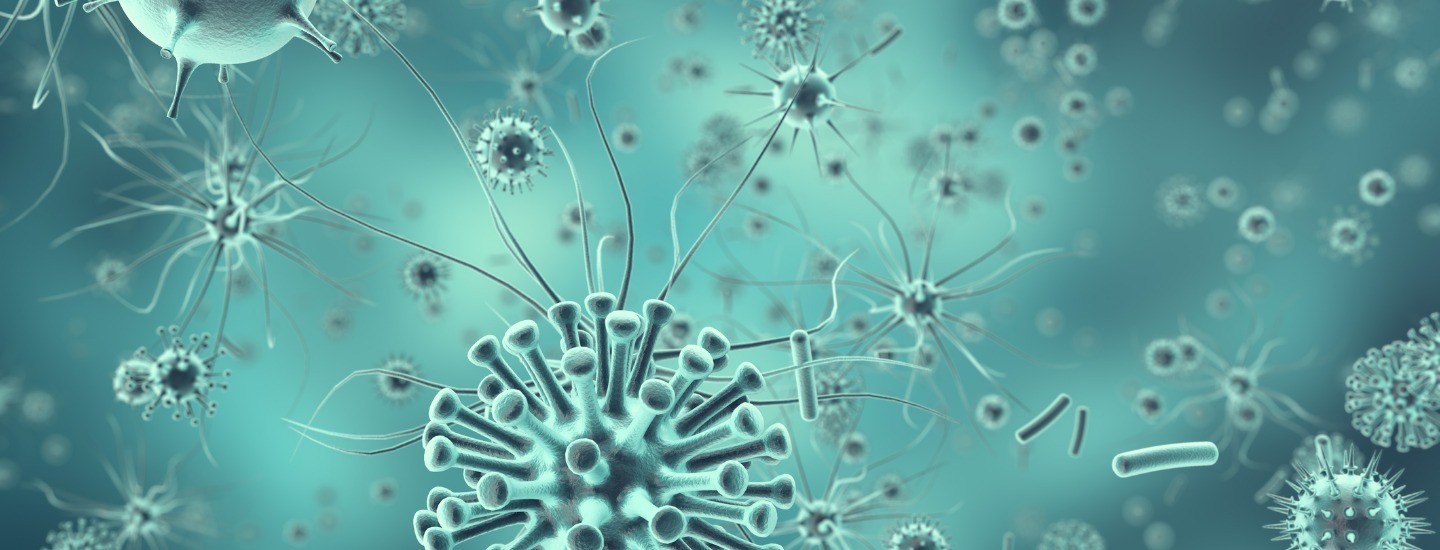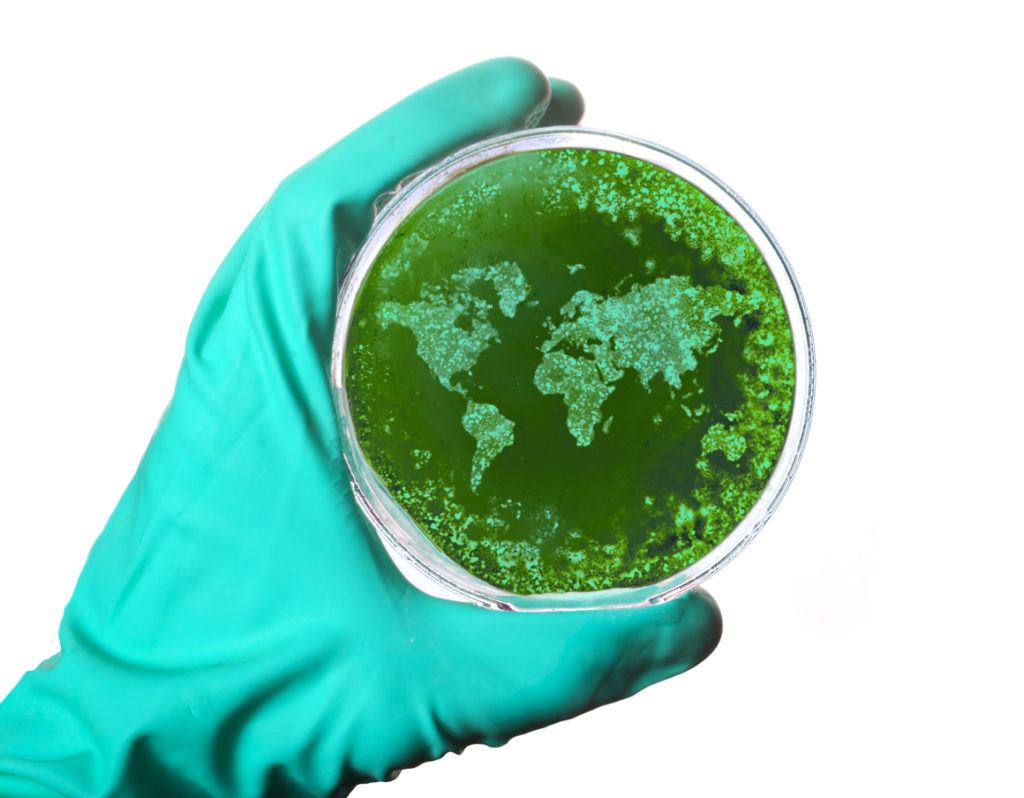
Antibiotic Resistant & Emerging Infectious Disease
What is Antibiotic Resistance?
Antibiotic resistance results in the generation of “superbugs”, bacteria that can circumvent every antibiotic we currently have.
As antibiotics kill bacteria, some bacteria evolve resistance mechanisms. These mechanisms can be very diverse and can be shared between different bacteria. Once bacteria are resistant to a specific antibiotic, that antibiotic and even other antibiotics with the same general mechanism are no longer able to control the infection caused by those bacteria.
Due to the widespread (and sometimes in appropriate) use of antibiotics, antibiotic resistance is rapidly increasing.
The Centers for Disease Control and Prevention (CDC) estimates that 23,000 people in the US die every year from antibiotic resistant infections. The CDC has characterized the biggest bacterial threats in antimicrobial resistance.
Some Quick Facts About Infectious Diseases
- Before antibiotics, 90% of children with bacterial meningitis died. Survivors faced long term consequences, including deafness and mental disability
- Strep throat could be a fatal disease, and ear infections sometimes spread from the ear to the brain, causing severe problems
- Other serious infections, from tuberculosis to pneumonia to whooping cough, were caused by aggressive bacteria that reproduced with extraordinary speed and led to serious illness and sometimes death
- Before antibiotics, cancer treatment and many routine surgeries would have caused serious infections leading to death
How do Bacteria Generate Resistance to Antibiotics?
Bacteria have developed a number of resistance mechanisms, including:
- Developing protein pumps to “pump out” any antibiotics that get inside their cell membranes
- Changing the number of pores in the cell membrane to decrease the penetration of antibiotics
- Mutations in the proteins that the antibiotic targets, making the antibiotic less effective
- Chemically altering the antibiotic by mutating enzymes which can attack the chemical bonds in the antibiotic, making the antibiotic ineffective
What is Emerging Infectious Disease?
Emerging infectious diseases are infections which we don’t yet know about, caused by pathogens that have not been well characterized. Some of these infections can be caused by bacteria.
For instance in 2011 there was an outbreak of E. coli 0104:H4, a strain of bacteria not previously associated with severe disease in humans, which ultimately caused over 4,000 people to sicken, of which approximately 800 experienced Hemolytic Uremia Syndrome requiring hospitalization, ultimately causing 53 deaths.

Treatment Options
The current treatment for acute bacterial infection is antibiotics.
Antibiotic usage is dedicated by a number of considerations:
- Location of the infection. Because the antibiotic is only effective if it can target the bacteria at high enough concentrations, treatment is dictated by whether enough antibiotic can be delivered to the site of infection.
- Type of bacteria. Choosing the wrong antibiotic means the bacteria will continue to grow. Bacteria are classified in a number of ways:
- At the crudest level, they are classified as intracellular or extracellular. Generally extracellular bacteria are easier to kill while intracellular bacteria hide within cells where it is more difficult to deliver the antibiotics.
- Different bacteria also have different types of cell walls and are classified as being either “gram-positive” or “gram-negative”.
- There are also substrains of bacteria that have developed resistance to antibiotic treatment. This is a case of evolution in action. And different bacteria have come up with different solutions. Unfortunately they can also share these solutions with other bacteria, meaning that the problem of antibiotic resistance is an ever-spreading and ever-growing one.
- Side effects of the antibiotics. For instance, antibiotics which affect the good gut bacteria will increase the chances of other types of infection in the future.
Where Soligenix Comes in
While antibiotics directly target the bacteria, dusquetide (the active ingredient in SGX943) takes an alternative approach and instead modulates the immune response to infection. Innate Defense Regulators activate the innate immune response to generate more anti-infective cells at the site of infection while also dampening inflammation. Innate Defense Regulators can prevent or treat infections, either alone or in combination with antibiotics.
The SGX943 approach has a number of advantages:
- Because the bacteria aren’t directly targeted, bacteria are unlikely to gain resistance.
- Because the bacteria aren’t directly targeted, it doesn’t matter if the bacteria are antibiotic resistant.
- Because the bacteria aren’t directly targeted, it doesn’t matter where or how they infect. Dusquetide has been shown to defend against gram-positive, gram-negative, intracellular and extracellular bacteria.
- Because the bacteria aren’t directly targeted, dusquetide can be used in combination with antibiotics.
- Because dusquetide targets and modulates the innate immune system, dusquetide doesn’t need to be delivered directly to the site of infection.
Helpful Resources About Antibiotic Resistance
Information on bacterial infections and antibiotic resistance can be found at the following links:
Antibiotic Resistance and Infectious Disease Scientific Advisory Board
Our scientific advisory board for antibiotic resistance and emerging infectious disease has decades of experience in the biopharmaceutical industry, which includes unique expertise in developing orphan/rare disease therapies. All content on this page has been reviewed by our team of experts. Meet the antibiotic resistance and emerging infectious disease scientific advisory board.
Interested in SGX943 (Dusquetide) as an approach to antibiotic resistance?
Learn more about partnering with us or contact us directly.